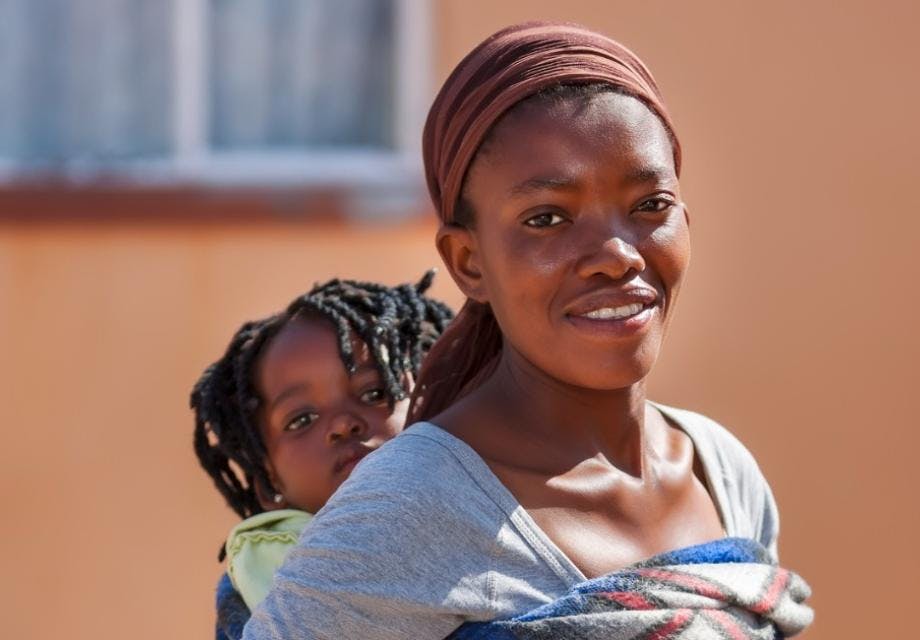Botswana on course to end AIDS epidemic by 2030
Hester Phillips
06 September 2023
The Fifth Botswana AIDS Impact Survey confirms the country has met the UNAIDS 95-95-95 targets ahead of schedule
Full results of the Fifth Botswana AIDS Impact Survey (BAIS V) have been released, reflecting the country’s impressive progress in controlling HIV. But some groups need further focus to close the remaining gaps.
What is this report about?
BAIS V is a household-based national HIV survey which was carried out between March and August 2021. It involved around 13,500 randomly selected households and 20,000 adults and children. People answered questions and were also tested for HIV.
Why is this important?
The previous BAIS surveys took place in 2001, 2005, 2008, and 2013. The results from each chart Botswana’s progress in responding to HIV. Crucial for a country which has been among the most affected by HIV globally.
What does the report say?
HIV prevalence and new infections
HIV prevalence among adults (ages 15-64) is 20.8%. This means around 329,000 adults have HIV (around one in five). HIV prevalence among women is 26.2% (around one in four women). This is much higher than HIV prevalence among men, which is still high at 15.2%.
HIV prevalence among children (ages 0-14) is 0.8%. This means around 5,600 children have HIV.
HIV prevalence varies by age and location. It is highest among people aged 45-49, at 45.3%. It is lower in urban areas (at 18.9%) than in rural areas at (24.6%).
Every year, around 2,200 adults get HIV. This equates to an incidence rate of 0.2%. Women are four times more at risk than men (incidence is 0.4% among women, compared to 0.0% among men). These incidence rates are the same for young people (ages 15-24).
The 95-95-95 targets
BAIS V is the first population-based survey to confirm a country has achieved the UNAIDS 95-95-95 goals ahead of 2025.
Among adults with HIV, 95.1% are aware of their status. Of these, 98% are on antiretroviral treatment (ART) and 97.9% are virally suppressed. These targets have been fully achieved among women. Among men, the second and third targets have been reached. The first target (on HIV testing) is just below, at 93%.
Among young people coverage of HIV testing and treatment is lower. Among young people with HIV, 84.5% are aware of their status, of whom 98.5% are on ART and 91.6% are virally suppressed.
It is important to note that the 95-95-95 figures above only relate to people with HIV who are aware of their status. When including all people with HIV, even if they are undiagnosed, the testing and treatment gaps become clearer. For instance, 87.3% of all men with HIV are virally suppressed, which means around 13% are not.
Among all young people with HIV, 76.2% are virally suppressed, which means around 24% (around one in four) are not. Viral suppression is lower among young women with HIV at 73.7%, compared to young men at 81.8%.
HIV prevention
Most adults (88%) have taken an HIV test. Testing rates are slightly higher among women (at 89.4%) than men (at 86.5%).
Only 66.4% of young people have tested for HIV. And only 31.1% of young people have tested in the past 12 months.
Among sexually active young people, 84.2% reported having sex with someone they weren’t married to or living with in the past 12 months. Of these, 75.2% used a condom.
Among adults without HIV who had heard of PrEP, 69.8% said that they would be willing to take it. More men were willing to take PrEP than women (70.7% compared to 68.8%).
Among women who had given birth in the past 12 months, 95% knew their HIV status, and all women with diagnosed HIV reporting taking ART while pregnant.
What does this mean for HIV services?
These results, from a country with one of the biggest HIV epidemics in the world, show that ending AIDS is possible.
Botswana will now need to focus on maintaining this level of testing and treatment so that its HIV response remains on track. It will also need to target the groups of people who are still struggling to test for HIV or get effective treatment. The focus will likely be on adult men and young people, particularly young women. Work on HIV prevention, particularly encouraging condom and PrEP use among young people, is also important.
As this survey does not collect information on selling sex or using drugs, or on sexuality or gender identity, it is unclear how well reached sex workers, people who use drugs, men who have sex with men and LGBT+ people are. These data gaps need to be addressed to fully understand where to target HIV programmes in Botswana to ensure those most at risk are not left behind.
Get our news and blogs by email
Keep up-to-date with all our latest news stories and blogs by signing up to the Be in the KNOW news digest.
